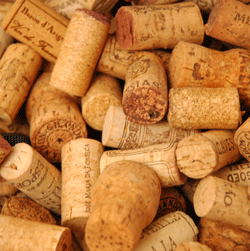Uncorking Our Ties with the Cork Tree
Sharon Santino,
Sep 16, 2010
 Wine corks are popped, sniffed - and sometimes even saved. And while you may know that the spongy material preserving our grape libations comes from a tree, did you know that our usage of this renewable resource helps guard a delicate balance in the wild?
Wine corks are popped, sniffed - and sometimes even saved. And while you may know that the spongy material preserving our grape libations comes from a tree, did you know that our usage of this renewable resource helps guard a delicate balance in the wild?
A cork tree is a type of evergreen oak that is native to southern Europe and northern Africa. The tree can grow up to 65 feet tall, its branches can spread to around 40 feet wide and the trunk can reach 3 to 4 feet in diameter. They can live up to 200 years - even when their bark is collected for wine stoppers.
In fact, harvesting cork from this tree does not actually involve harming the plant itself - the bark is carefully pried off the tree using small axes. After a tree's bark has been collected, it is left undisturbed for 9 to 12 years to regenerate.
The cork oak's thick bark is actually thought to be an evolutionary answer to the forest fires common to its native environment-making it an ideal habitat for the diverse ecosystem living in its branches. Its limbs sustain more than 100 species, including the rare short-toed eagle and the extremely rare Iberian lynx - both of which exclusively count the cork oak as their home.
In addition to hosting animals, cork oaks are an essential pillar of the local plant community. Their roots anchor the soil, regulate water and prevent desertification. Without cork oaks, many mixed-plant woodlands would suffer from aridity, drought and dust.
The relationship between humans and cork oak trees is beneficial because our need for its bark ensures that the tree's population stays stable, guaranteeing the safety of its plant and animal tenants as well as its forest neighborhood.
Indeed, the bark from this perennial woody plant is valuable for more than just wine stoppers. Thanks to its natural resiliency, resistance to water and insulating properties, cork is used in shoes, flooring, insulation and even items like coasters and mousepads.
The next time you pop a cork in celebration, take a moment to think about how our alliance with this beneficial plant supports ecosystems and helps maintain the environment.


